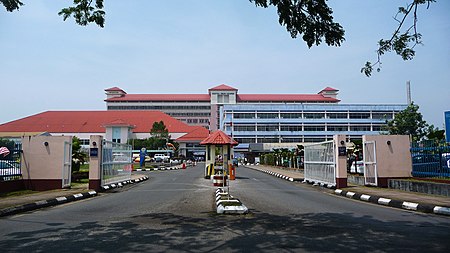Batu Lintang camp (also known as Lintang Barracks and Kuching POW camp) at Kuching, Sarawak on the island of Borneo was a Japanese-run internment camp during the Second World War. It was unusual in that it housed both Allied prisoners of war (POWs) and civilian internees. The camp, which operated from March 1942 until the liberation of the camp in September 1945, was housed in buildings that were originally British Indian Army barracks. The original area was extended by the Japanese, until it covered about 50 acres (20 hectares). The camp population fluctuated, due to movement of prisoners between camps in Borneo, and as a result of the deaths of the prisoners. It had a maximum population of some 3,000 prisoners.Life in the camp was harsh, with POWs and internees alike forced to endure food shortages, disease and sickness for which scant medicine was made available, forced labour, brutal treatment, and lack of adequate clothing and living quarters. Of the approximately 2,000 British POWs held there, over two-thirds died during or as a result of their captivity. The construction and operation of a secret radio receiver for over 2½ years, from February 1943 until the liberation of the camp, was a morale booster and allowed the prisoners to follow the progress of the war. Discovery would have resulted in certain death for those involved.
Following the unconditional surrender of Japan on 15 August 1945, the camp was liberated on 11 September 1945 by the Australian 9th Division. On liberation, the camp population was 2,024, of whom 1,392 were POWs, 395 were male civilian internees and 237 were civilian women and children. Amongst official Japanese papers found at the camp following its liberation were two "death orders". Both described the proposed method of execution of every POW and internee in the camp. The first order, scheduled for enactment on 17 or 18 August, was not carried out; the second was scheduled to take place on 15 September. The timely liberation of the camp may have prevented the murder of over 2,000 men, women and children.
In July 1948, a teachers' training college moved to the site, where it continues to this day, the oldest such establishment in Malaysia.









